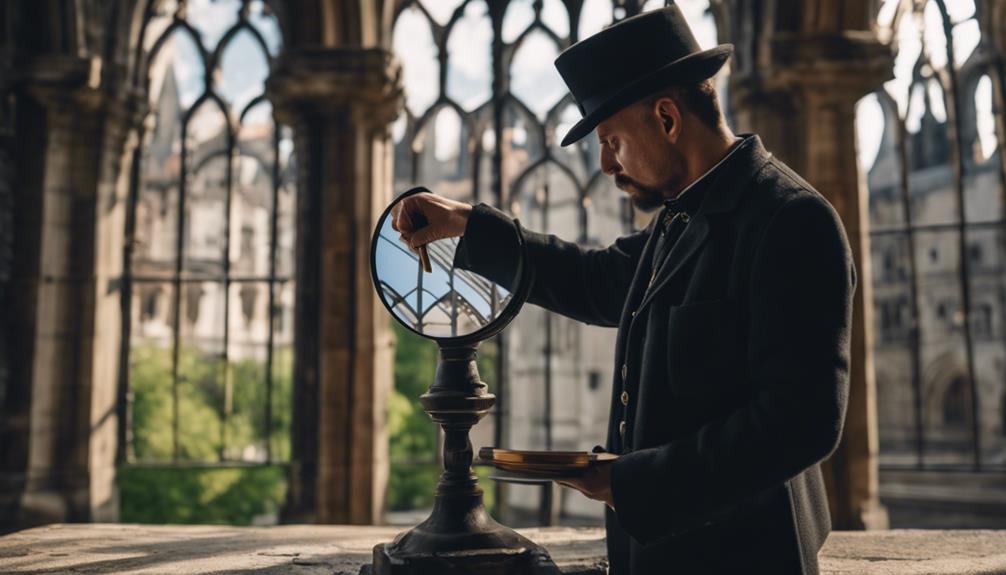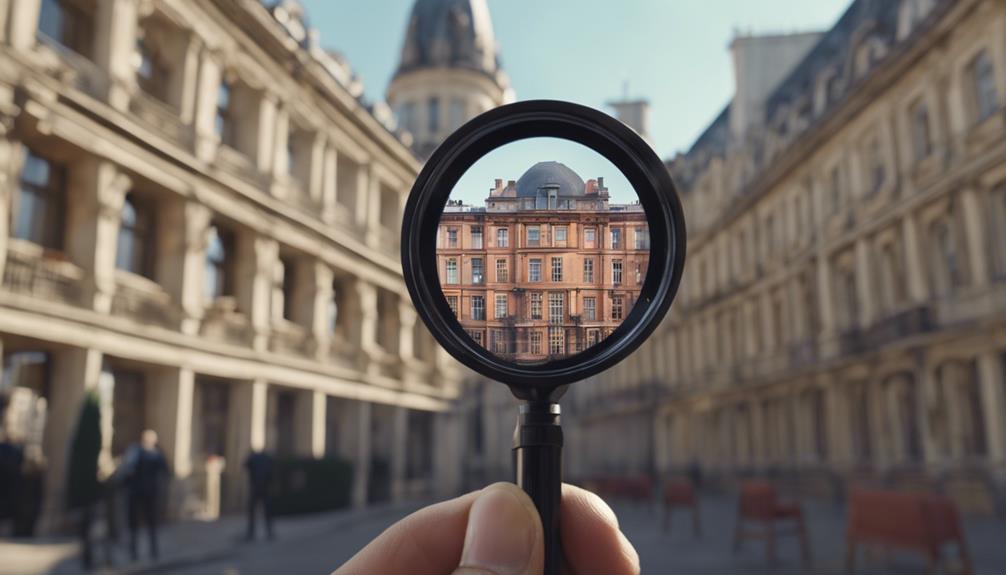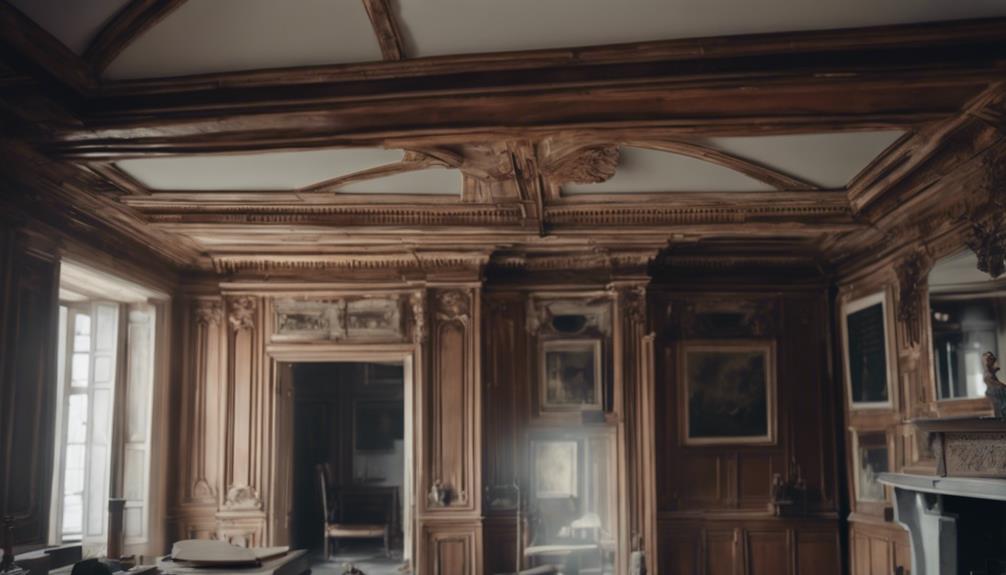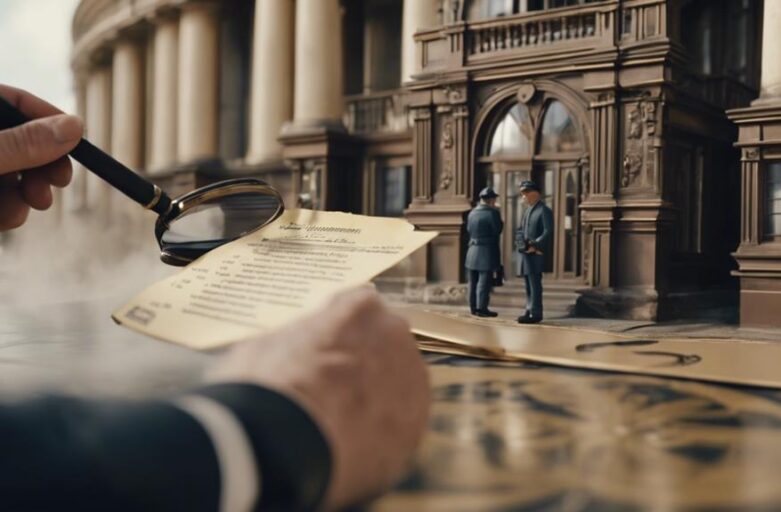To become a top-notch inspector of historic buildings, certain vital certification requirements are needed. You should understand various old-time building materials and recognize different design styles.
Learn how to check a building's strength and become savvy with ways to keep it looking as good as new. Familiarize yourself with the rules and regulations.
Sharpen your ability to spot safety risks and create smart plans for upkeep and repair. Learning from experts in preservation can be a big help!
As you explore each requirement, you'll learn the best ways to protect our historic treasures. You might even feel like you're not just saving history, but being a part of it!
Key Takeaways
- Grasping the unique features of different old building materials.
- Learning about various styles of architecture and why they're important in history.
- Being good at checking how solid old buildings are while keeping their historic charm.
- Knowing how to use special methods to keep old buildings in good shape for a long time.
- Following rules and safety steps specially made for old buildings.
Understanding Historic Building Materials
Understanding old buildings and their materials is like being a detective. You need to know about different materials like adobe, brick, wood, stone, and metal. Each of these has unique features you should know about. For example, wooden structures might get damaged by water, or stone buildings might wear away.
Preserving old buildings is more than just keeping them looking nice. It's about respecting our past and keeping these beautiful structures around for future generations. This means you need to use the same kind of materials and techniques that were used when the building was first built. If you're doing this job, you're not just an inspector. You're a guardian of history.
Knowing about different materials and how to take care of them is really important. Your job isn't just about understanding the past, but also about protecting the future. As an inspector, you're part of a team that works hard to keep our historical buildings safe and sound. Your role in this team is very important. So, enjoy the chance to make a difference.
Familiarity With Architectural Styles
Just as you take time learning about old building materials, it's equally important to learn about different architectural styles. This will help you identify and understand buildings from various times. It's crucial to know about different architectural movements, from the complex designs of Gothic and Baroque to the simpler shapes of Art Deco. It's not only about how they look; each style tells a tale, reflects a time, and represents a culture.
It's also important to know about architectural styles from different regions. This helps you understand a building's history and what it needs to be preserved. Spotting special design features from different times will help you check a building's architectural health during inspections.
Here's a simple guide:
| Style | Key Features |
|---|---|
| Gothic | Pointed arches, ribbed vaults |
| Baroque | Grand, rich, contrasting |
| Art Deco | Simple, geometric designs |
| Regional Styles | Changes depending on place and time |
In your hands, these styles aren't just history; they're alive. The more you know, the better you'll get at recognizing, evaluating, and preserving these gems. This isn't just a job; it's a mission to protect our shared past and build a sense of community. Show passion, be accurate, and become a protector of history.
Structural Integrity Assessment Skills

Knowing how to check if old buildings are safe and strong is a really important job. It's like being a detective, but for buildings! You need to know a lot about different stuff like how buildings stand up, what they're made of, and how they were built a long time ago.
You'd be like a doctor for buildings, checking their 'health' and making sure they're strong enough to stand up to wind, rain, and even earthquakes. You'd need to know a lot about how different materials like metal, brick, or wood can handle these things.
You also need to be really good at finding problems in a building. This could be things like cracks in the walls, or places where the building is leaning a bit. These might be small signs that there's a bigger problem with the building.
You wouldn't just be finding problems though, you'd also be helping to fix them! But you'd have to be careful to keep the building looking the same as it did when it was first built. You'd need to be good at figuring out what the best way to fix things is, while still keeping the building's history alive.
It's a really cool job, and you'd be helping to keep our history safe for everyone to enjoy!
Knowledge of Preservation Techniques
If you're interested in keeping old buildings strong and beautiful, you need to learn about preservation techniques. This isn't just about admiring how pretty they are, but also about learning how to keep them standing for a long, long time.
Think of it like a doctor's job, but for buildings. You have to know how to use special materials like lime mortar, timber, and historical paints. These are like the medicines that you use to treat the buildings. You also have to learn treatments like consolidation, cleaning, and stabilization, which are like the exercises a doctor might prescribe.
You also can't forget about the importance of old-school craftsmanship. Skills like stone carving, plasterwork, and leadwork, are super valuable. It's like knowing how to make a building look and feel just like it did when it was first built.
But remember, it's not just about keeping a building looking like it did in the past. It's also about making sure it can stay standing in the future. You have to keep the building strong and safe, while still keeping its original charm.
Regulatory Compliance Mastery

You're entering the important world of learning the rules for building and construction.
It's like a superhero's task to understand and follow these rules about how buildings are designed, what they can be used for, and how to take care of really old ones.
This isn't just about doing well on a test – it's about making sure our old buildings stay standing and looking good for everyone to enjoy.
Understanding Regulatory Standards
Navigating the rules for preserving old buildings can be like trying to find your way through a maze. But don't worry, it's not as hard as it sounds! You just need to keep up with the latest rules and understand the laws in your area. This will help you get everything in order, from getting the right approvals to performing the correct building checks.
When you know all about things like zoning laws, building codes, and guidelines for preserving old buildings, you're in a good spot to keep these important pieces of history safe. These rules are key to getting the right permissions, doing proper checks, and most importantly, for keeping our shared history alive and well.
Mastery in Compliance Enforcement
Learning how to keep historic buildings safe and real isn't just about filling out forms. It's about protecting our shared old buildings. It's about using smart checking methods to make sure restoration work follows the laws and strict rules. If you want to be a certified inspector, you need to really know the building laws and area laws linked to old structures.
Your job in making sure rules are followed is very important. You're the protector of realness, making sure changes and fixes keep the building's history.
The process of getting certified will give you the knowledge to check if safety codes, standards for people to access, and rules for the environment are followed. By getting this certification, you're becoming part of a group that really cares about keeping the architectural wonders of the past safe.
Safety and Hazard Identification
In inspecting old buildings, spotting dangers like shaky structures, harmful paint, asbestos, and fire risks is crucial. This way, we can keep the building and people safe. As an inspector, you need to know all the safety rules. You need to be able to spot hazards to avoid accidents and keep the building solid.
Your training should teach you to pay close attention to details and know all the safety rules. You need to check things like electrical systems, pipes, and air systems, and see if there's anything that could start a fire. Your job isn't just about completing a checklist; it's about protecting history for now and later.
Spotting these dangers isn't just work; it's about preserving the building's story. You want to make sure the building is safe but also respect its history. It can be tough, but as an inspector, it's your job. When you inspect old buildings, you're not just an inspector; you're a protector of history.
Maintenance and Restoration Strategies

Taking care of old buildings is like taking care of a piece of history. It requires knowledge, attention, and dedication. We need to keep them clean and fix them regularly to stop them from falling apart. This allows us to help the buildings last longer. To do this, we need to use the right care methods that match the rules for preserving old buildings.
Learning how to fix things like stone work, wood, and old paint is important. By knowing these skills, you'll be ready to tackle any problems that come up. Also, remember to consider weather and pollution which can damage old buildings. Find ways to protect the buildings from harsh weather and dirty air.
It's also a good idea to take pictures of the building before and after you fix it. This shows how well your work is helping to preserve the building. It's also a way to show how hard you're working to keep our history alive.
Lastly, working with experts who know a lot about preserving old buildings can be very helpful. They can give you good advice to make sure the building stays true to its history. By working together, we can make sure these important buildings can be enjoyed by many generations to come.
Conclusion
Historic buildings are like precious gems, and you can become their protector. Here are seven simple steps to earn your historic building inspection certification.
First, become a master at recognizing different materials and architectural styles. Then, learn how to check if a building is strong and safe. Next, familiarize yourself with the best ways to preserve these old structures.
Ensure you understand the laws about looking after historic buildings. Spot potential safety risks like a pro. Lastly, develop a plan for keeping the building in good shape and restoring it if necessary.
By ticking off these seven steps, you'll be ready to look after our precious architectural history with care and accuracy. It's a big job, but you're ready to take it on.


